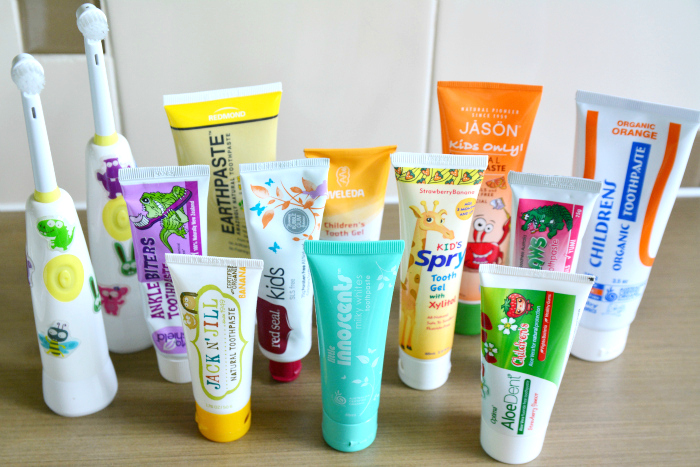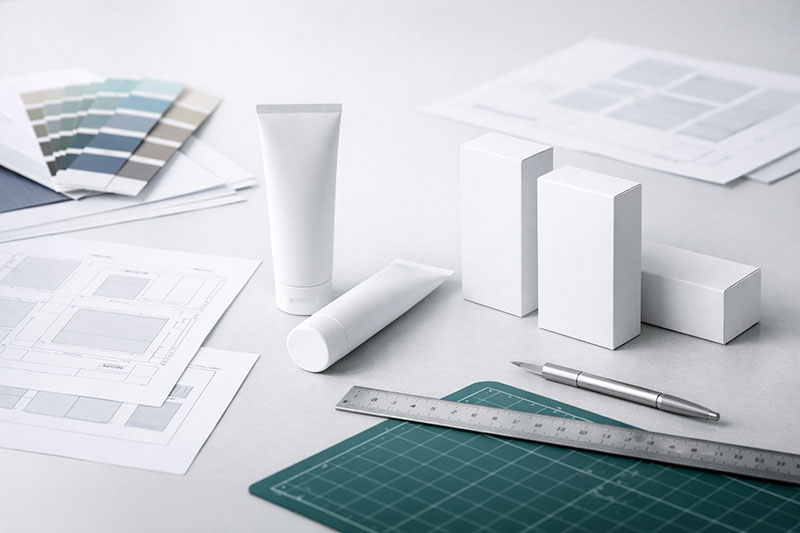Kids Toothpaste : When to Start, Swapping to Adult Paste

Understanding Kids’ Toothpaste: Why It Matters
Children’s toothpaste serves a dual purpose: promoting oral hygiene and encouraging healthy habits. It should:
Contain appropriate fluoride levels to prevent cavities.
Feature safe, fun flavors and packaging that make brushing enjoyable.
Use low-abrasive formulas gentle on developing enamel.
Offer trustworthy sugar-free ingredients.
All these factors support dental health for toddlers, preschoolers, and older kids — and turn twice-daily routines into opportunities for life-long well-being.
Types of Kids’ Toothpaste: Age Guidance and Fluoride Considerations
1. Infant & Toddler Toothpaste (0–3 years)
Fluoride-Free or Low Fluoride (≤ 500 ppm): The American Academy of Pediatric Dentistry (AAPD) recommends a smear of fluoride toothpaste (~1000 ppm) starting when the first tooth appears. Some parents prefer fluoride-free varieties, especially if supervision is inconsistent.
Flavor: Mild (e.g., unscented, light fruit) to avoid overwhelming infants.
Top picks: Hello products offer fluoride-free Hello Kids Toothpaste; Boka has toddler-friendly gel formulas with gentle flavors.
2. Preschooler Toothpaste (3–6 years)
Moderate Fluoride (1000–1100 ppm): A “pea-sized” amount is ideal once children can spit reliably.
Flavors: Vibrant (e.g., watermelon kids toothpaste, strawberry) to encourage brushing.
Popular options: Colgate Kids Toothpaste, Crest Kids Toothpaste (check age recommendations), and Hello Kids Toothpaste in fruit flavors.
3. School-Age Toothpaste (6–12 years)
Standard Fluoride (1100–1450 ppm): Same as adult strength for cavity protection.
Form Factors: Pump-style or squeeze, travel-size tubes for backpacks.
Consider products targeting specific needs like cavity protection, whitening, or sensitivity.
Examples: Crest Pro-Health for Kids, Arm & Hammer Kids toothpaste, and Dr. Brite Kids toothpaste.
4. Teen & Adult Transition (12+ years)
Most teens can switch to regular adult toothpaste unless they have specific oral care needs (e.g., orthodontic, sensitivity).
Adults can use kids’ toothpaste, though it might lack whitening agents or high fluoride.
FAQ beams: “Can adults use kids toothpaste?” — Yes, for basic hygiene; just expect milder benefits.
What to Look for in Kids’ Toothpaste
Fluoride Content
Prevents cavities; recommended for children over 2–3 if they can spit—otherwise choose low or no fluoride.
Age-specific labeling
Only buy formulas that specify age groups (e.g., “Ages 2–5”) to ensure safety and efficacy.
Abrasivity
Look for low Relative Dentin Abrasivity (RDA) scores. Kids’ enamel is still thin.
No Dyes or Artificial Sweeteners (e.g., saccharin)
Many parents prefer natural or xylitol-sweetened; Hello and Boka offer dye-free, vegetarian/vegan options.
Certifications
ADA Seal of Acceptance is valuable for dental professionals’ confidence.
Dispenser Type
Squeeze tubes, pumps, or novelty Character toppers—think about convenience and hygiene.
Popular Kids’ Toothpaste Brands—Pros & Cons
Hello Kids Toothpaste
Pros: Natural, dye-free, fluoride or fluoride-free versions, fun flavors (watermelon, bubblegum), appealing packaging. Gentle and vegetarian-friendly.
Cons: Slightly higher price, limited availability in big-box stores, pump may be less kid-proof.
Colgate Kids
Pros: Widespread availability (Walmart, Amazon), flavors kids love. Established brand with ADA acceptance.
Cons: Contains dyes and saccharin; fluoride content may be too high or absent depending on tube.
Crest Kids Toothpaste
Pros: Effective cavity protection, ADA Seal, varied product lines (pump, character lids).
Cons: Some parents avoid artificial dyes.
Boka Kids Toothpaste
Pros: Natural ingredients, charcoal-free whitening, mint or mild fruit flavors, low abrasivity.
Cons: Harder to find in-store; premium price.
Dr. Brite Kids Toothpaste
Pros: Natural, non-GMO, fluoride-free, xylitol-sweetened.
Cons: Limited fluoride; may need pairing with fluoride rinse.
Arm & Hammer Kids
Pros: Baking soda base, mild mint, familiar brand, widely available.
Cons: Abrasiveness may be high; some formulas contain dyes.
Real Parents’ Perspectives from Reddit
From r/toddlers:
“We use the Hello kids toothpaste – my 3‑year‑old loves the watermelon flavor and it’s fluoridated without artificial stuff.”
“I tried Crest Kids, but she hated the mint and it was too ‘adult’ tasting.”
These anecdotes highlight the importance of flavor and gentler ingredient lists for young kids.
Addressing Parents’ Common Questions
Is Crest toothpaste good for kids?
Yes, Crest Kids with ADA Seal and age-appropriate fluoride helps prevent decay—just choose mild flavors without intense mint.
At what age should a child start using toothpaste?
As soon as the first tooth emerges (~6 months). Use a smear (size of a grain of rice) ideally with fluoride toothpaste recommended by a dentist. Gradually increase to pea-sized around age 2–3.
What to avoid in children’s toothpaste?
Inflated fluoride levels if child can’t spit
Harsh abrasives (high RDA)
Artificial dyes, saccharin, parabens, SLS (some kids are sensitive)
Unflavored or adult-flavor mint that might discourage brushing.
When should kids switch to adult toothpaste?
Once they’re 12 or can brush independently and are comfortable with higher fluoride mint flavors. However, ADA Seal remains key.
Can adults use kids’ toothpaste?
Yes, but kids’ formulas often lack whitening, tartar control, or high fluoride, so they serve for basic hygiene.
Can kids use whitening toothpaste or adult toothpaste?
Not recommended before adolescence (~12+)—these may be abrasive or overly potent. Stick to kids’ or mild adult formulations until then.
Practical Tips for Parents
Use a fun toothbrush and flavored toothpaste aligned with your child’s tastes.
Watch the amount: smear till age 2–3; pea for 3+.
Supervise brushing until age 7–8.
Visit the dentist for the first check-up by age 1, then biannual.
Keep toothpaste out of reach to prevent swallowing.
Rotate flavors to prevent fatigue.
Stock travel-size tubes for travel or camp.
Try Lidercare Now!
We Help You Launch New Products, And Continue To Grow. Try Us With 20% Off Your First Order!
Wrap‑Up
Choosing the right kids’ toothpaste starts early: from a tiny smear on that first tooth to toothpaste that makes brushing fun for school‑aged children. Whether fluoride or fluoride-free, natural or conventional, the best product supports healthy teeth and encourages good habits. Aim for ADA‑approved, age-appropriate fluoride levels, mild flavor, low abrasivity, and fun packaging.
FAQ
We’ve explored when to begin using toothpaste, fluoride levels, ingredient safety, brand comparisons, parent experiences, and transitioning to adult formulas. Choosing age‑appropriate, trusted toothpaste can set children on a path to lifelong oral health.
Q: What is the best toothpaste for kids?
Choose ADA-approved, age-appropriate fluoride toothpaste—common favorites include Colgate Kids, Crest Kids, Hello Kids, and Boka Kids, based on taste preference and ingredient comfort.
Q: Can my 4‑year‑old use my toothpaste?
Adults’ toothpaste may have too much fluoride or strong mint flavor. Better to pick a kids’ variant with the right fluoride content and taste for preschoolers.
Q: At what age can kids use adult toothpaste?
Around 12 years old or when they brush reliably and prefer standard mint flavors. ADA Seal remains a helpful benchmark.
Q: Are fluoride‑free kids’ toothpastes effective?
Fluoride‑free varieties (like Hello or Dr. Brite) are fine with strong brushing habits and regular dental care, but pediatric dentists recommend low‑level fluoride to reduce cavities.
Q: Can adults use kids’ toothpaste?
Yes—it’s safe but may lack whitening, tartar control, or stronger fluoride found in adult formulas.
Further Reading
Table of Contents
Awesome! Share to:
Latest Blog Posts
Check out the latest industry trends and take inspiration from our updated blogs, giving you a fresh insight to help boost your business.


